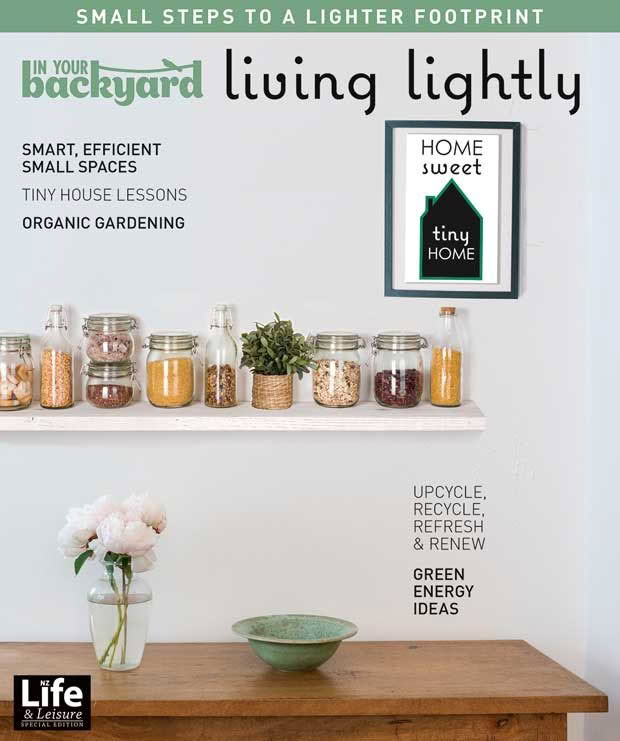How to control and prevent pests in the garden the natural way
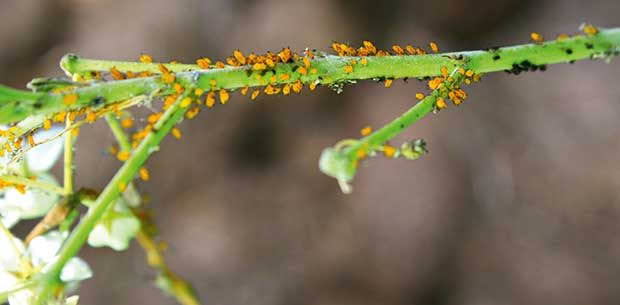
A thriving colony of aphids.
It’s easy to malign pests, but they’re not malicious. Think before spraying them and adopt an attitude of gratitude to the many beneficial insects that feed on the nasties that attack the garden.
Words: Kath Irvine
Who’s eating who: pest and predator
For every pest that sucks or chews on plants, there’s a predator or parasitoid that’ll devour it. Predators hunt or trap, then gobble (think spiders), whereas parasitoids are a bit more sophisticated and lay their eggs in or on the pest.
In this most clever of arrangements, the pest becomes a mobile nursery and meal service as the newly hatched bug slowly munches on the pest’s innards until the parasitoid is mature enough to leave and its host is dead.
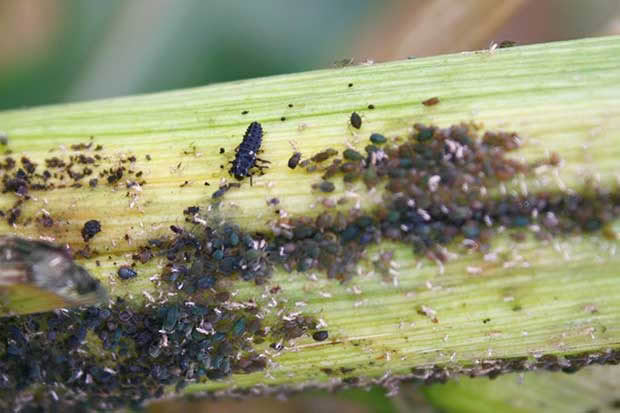
This bunch of black aphids is on my corn. No need for me to do anything because the ladybird larvae are sorting it out.
Learn to differentiate who’s who in the world of pests and predators – a mass of black might not be all black aphid, many could be ladybird larvae. With time, gardeners learn to leave the brown aphids alone as they play host to the next population of parasitic wasps.
For a list of who’s eating who, visit Ag Research.
ENTICE NATURAL PREDATORS
More insects are on your side than not – good guys include parasitic wasps, hoverflies, ladybirds, praying mantis, spiders, dragonflies, lacewings and various beetles.
They manage pests, pollination and the recycling of debris in return for a safe haven and supply of food.
Create a beneficial environment:
• Densely planted, largely undisturbed perennial garden
• Avoid chemical and indiscriminate, albeit natural, sprays such as pyrethrum that kill both good and bad
• Provide water – there’s no need for fancy pumps;
a bowl or bird bath will do
• Grow open flowers that provide easy access to
nectar for tiny, beneficial insects
MY FAVOURITE PERENNIALS
Summer: Lavender, Echinacea, ‘Golden Rod’, rudbeckia, thyme, marjoram, oregano, ‘Shasta’ daisies, bergamot, yarrow, lemon balm, ‘Anise’ hyssop, salvia, comfrey
Autumn: Sedum, caryopteris, rudbeckia, thyme, marjoram, oregano, sage, yarrow, lemon balm, ‘Anise’ hyssop, salvia, echinops,
chicory
Winter: Hellebore, wallflower, rosemary, sage, hebe, ‘Pineapple’ sage, clematis, ‘Anise’ hyssop
Spring: ‘California’ lilac, lavender, hellebore, wallflower, poppies, ‘Sweet William’, dianthus, bergamot, yarrow, clematis, ‘Anise’ hyssop
MY FAVOURITE ANNUALS
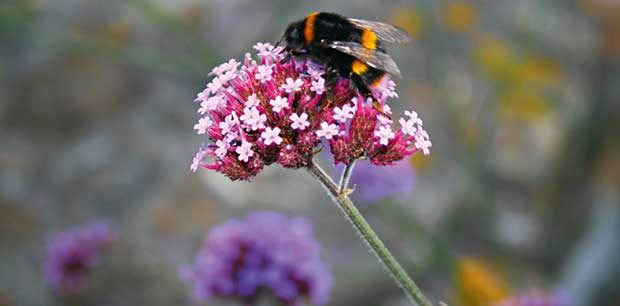
A bee on verbena bonarensis.
Borage, phacelia, calendula, marigold, cosmos, buckwheat, poppies, chamomile, cornflower, nasturtium, alyssum, Verbena bonarensis
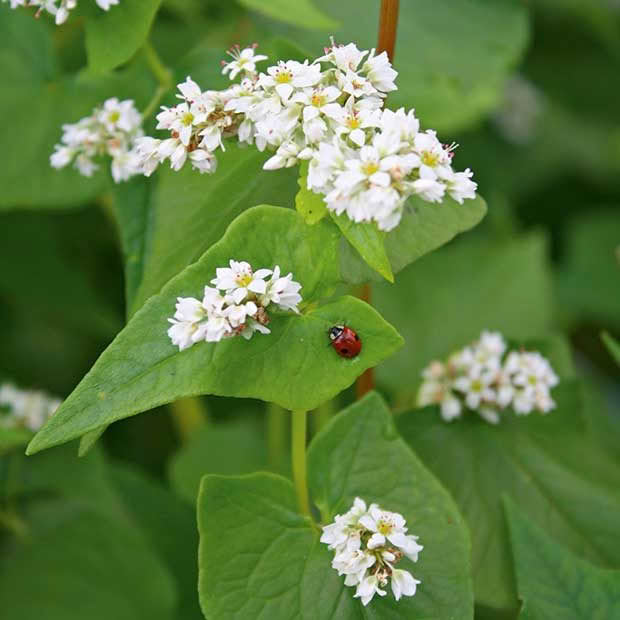
A ladybird settles on a buckwheat leaf.
Leave broccoli, parsley, fennel, dill and coriander to flower
TOP-FIVE PEST PREVENTIONS
Halt pests as soon as possible – a couple is easy, an epidemic is not and youngsters are more vulnerable than adults.
1. Pests search by smell or sight – mix plants up and grow different shapes and scents together to confuse them
2. Regular seaweed or fish foliar sprays boost plants and disguise their scent
3. Grow pest-resistant varieties – quiz gardeners in your neighbourhood
4. Meet the needs of plants – happy plants (much like happy people), have fewer problems
5. The trick to deter pests is to provide them with a more alluring crop, called a ‘catch crop’. When the catch crop becomes infested, pull it out and burn it, suffocate it in a rubbish bag, or send in the chooks. Shield bugs love calendula, buckwheat and mustard; cabbage white caterpillars love nasturtium; and aphids love calendula.
CATERPILLAR CONTROL
I avoid cabbage white season by only growing brassicas through winter. However, if that’s not an option, keep the crop covered with insect mesh or spray with Kiwicare Organic Caterpillar Biocontrol.
Its active ingredient, Bacillus Thuringiensis, is caterpillar specific, making it safe for other life forms. To keep up with hatching eggs, spray thoroughly and regularly (every two weeks) – the damage is done when ingested.
SLUG AND SNAIL SOLUTIONS
Trap them: Citrus skins or planks of wood provide perfect homes for slugs during the day. Once ensconced, upturn their home and squash them. Saucers of beer are irresistible, and slugs drown happy.
Hunt them: Molluscs come out at night and are easy prey. Drop them into limey water (a big handful of lime in a bucket of water).
Poison them: Tui Quash Slug & Snail Control is a pet-safe, chemical-free slug pellet.
BUG OFF
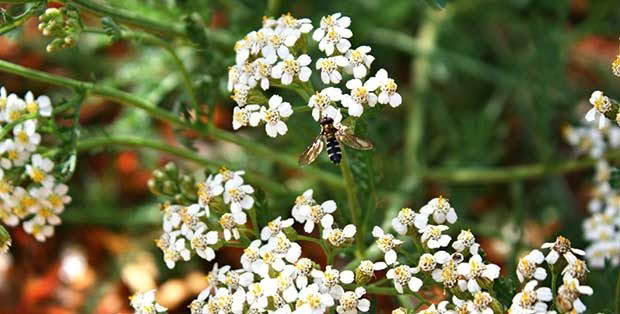
The beneficial hover fly.
• Keep psyllids out of potatoes with 0.6mm insect mesh (it also prevents carrot fly)
• Build up the population of beneficial insects – ladybird, hover fly and lacewing are top of the list
• Be thoughtful when feeding the garden – overdo the nitrogen and encourage the sweet sappy growth that sucking insects adore. Rotten manure, homemade compost and/or seaweed are your best bets.
• Prune for good airflow
SEE YOU LATER SUCKERS
Sucking insects breed like rabbits and wreak havoc. For aphids, shield bugs, psyllids, whitefly, thrips, passion vine hoppers and scale, neem is my weapon of choice.
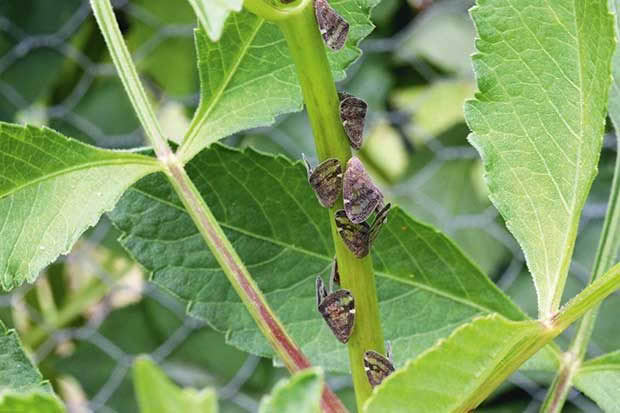
Adult passion vine hoppers.
Discard preconceptions of knock ‘em dead sprays (such as pyrethrum), neem has to be ingested to work. When the pests eat the sprayed foliage, neem begins to destroy their breeding and digestive abilities.
Given a little time, it’s extremely effective – the key is to spray foliage thoroughly and weekly to keep up with egg hatchings.
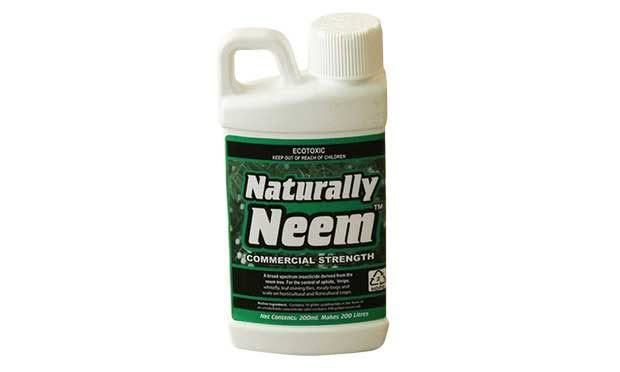
Stop when signs of the pests recede. Non-foliage eating bugs such as bees and ladybirds will be as safe as houses. I use Naturally Neem.
This article appeared in In Your Backyard: Urban Harvest, a special edition of NZ Life & Leisure about growing food in small city spaces. Packed with advice such as how to start a productive veggie garden, the best crops, creating awesome soil, vertical growing, container gardening, hydroponics, espaliered trees and edible hedges.
The latest In Your Backyard edition is available here.
